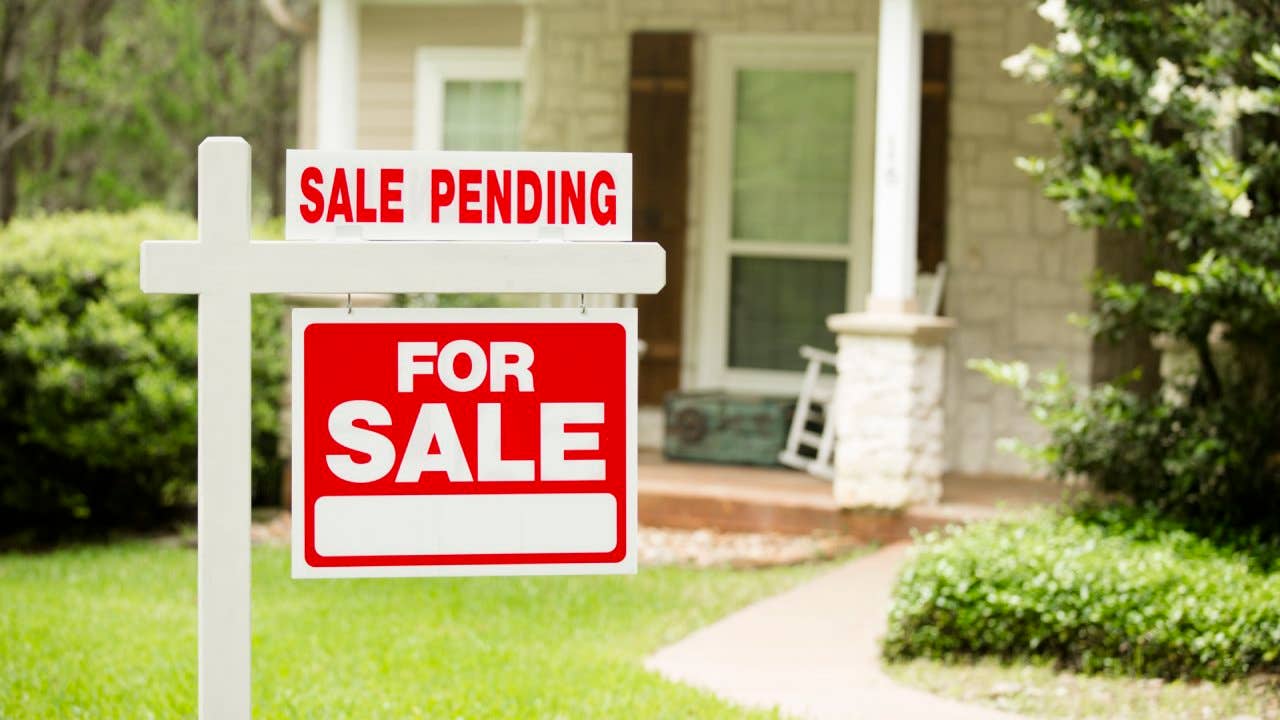Buying amid affordability squeeze? Here’s how homebuyers can cope

The Bankrate promise
At Bankrate we strive to help you make smarter financial decisions. While we adhere to strict , this post may contain references to products from our partners. Here's an explanation for .
The housing market caught fire in 2020 as Americans decided en masse that they wanted homes and were willing to pay for them.
Two years on, the pandemic-era housing boom continues to rage. Home prices have set one record after another. Bidding wars have become the norm in many markets.
While the sustained spike in prices is good news for sellers of homes, it’s not so great for buyers forced to pay prices that would have been unthinkable a year or two ago, and even to bypass basic safeguards such as appraisal waivers and inspection clauses.
“It’s a weird market,” says Donna Deaton, a Realtor at RE/MAX Victory + Affiliates in Westchester, Ohio. “I want it to go away.”
Alas, the continued shortage of homes for sale means this intense seller’s market isn’t going away for a while. Affordability remains a challenge.
Soaring prices aren’t the only factor squeezing buyers. There’s also the dramatic run-up in mortgage rates, which have jumped more than two full percentage points since the summer of 2021. That means buyers can’t afford as much house as they once could. The National Association of Home Builders estimates that less than half of homes sold in the U.S. are within the budget of a family making the U.S. median income of $90,000.
Affordability woes continue to mount as rising interest rates and home building material costs that are up 20 percent year-over-year are causing housing costs to rise much faster than wages.”
— Robert DietzChief Economist, National Association of Home Builders
The squeeze is especially acute for first-time buyers, who haven’t built up the equity that allows them to trade up to another home. In a Bankrate survey conducted earlier this year, nearly two-thirds of non-homeowners (64 percent) say an affordability factor is holding them back from owning a home. This includes 43 percent who say their income levels are not high enough, 39 percent who think home prices are too high and 36 percent who can’t afford a down payment and/or closing costs (respondents could select more than one factor).
Additionally, 58 percent of all U.S. adults would be willing to take action to find more affordable housing, such as moving out of state (27 percent), buying a fixer-upper (21 percent), moving farther from family and friends (20 percent), moving farther from work (13 percent), moving to a less desirable area (11 percent), and/or some other action (3 percent). Seventy-five percent of Gen Z (ages 18-25) and 69 percent of millennials (ages 26-41) would take at least one action to find more affordable housing compared to 59 percent of Gen X (ages 42-57) and 41 percent of baby boomers (ages 58-76).
Despite the difficult conditions, millions of Americans will buy homes this year. If that describes your situation, and if you’re stretching to buy a place, here are some tips and tactics to help you navigate a challenging market.
Think about the long run — and be realistic
Yes, the big jump in home prices has reminded many of the housing bubble of 2005 to 2007. However, housing experts say any slowdown is unlikely to mimic the last bust, which saw home values plummet. This time around, prices are likely to flatten or dip rather than plunge.
To protect yourself against a downturn, don’t buy a home unless you plan to keep it for at least three to five years. Remember that, with rare exceptions, residential real estate holds its value over the years.
“A home is a very good investment,” says Alec Hartman of Welcome Homes, an online home-building platform. “Plus, a mortgage is a forced savings plan.”
In other words, as you make your monthly mortgage payments, you’re putting some of each check toward your own equity in the home. All of those factors should help ease your fears about buying in a boom.
“You shouldn’t be scared, even if that’s the propensity of most people,” Hartman says.
While hopeless negativism won’t do much to build your wealth over the long term, neither will unbridled optimism. Greg McBride, Bankrate’s chief financial analyst, suggests taking a realistic view of how much higher home values can rise.
“The massive run-up in home prices means the holding period necessary for today’s buyers to build a meaningful equity stake that you can take with you has gotten longer,” McBride says. “If you think you’re going to flip the place and walk away with a pile of cash in two years, that train has left the station. If you plan on being there for seven years, then the odds are more in your favor.”
After two consecutive years of double-digit price appreciation, most housing economists agree that a slowdown is coming.
“Don’t bank on further home price appreciation like it is a birthright. It isn’t,” McBride says. “Values may fall in very stretched areas and for most other areas, home values may not change very much, if at all, over the next three to five years.”
Get fully preapproved for a mortgage
Even if price appreciation does slow in the future, that doesn’t change the reality now: Affording a home isn’t easy. For sellers to take your offer seriously, you’ll need to show that you’re a serious buyer by presenting proof that a lender has vetted your finances and preapproved you for a loan.
“That’s a big must-have in this market,” Deaton says. “To get a seller to even consider, we have to come in really strong.”
It’s also important to freshen up your preapproval to reflect today’s mortgage rates. Because it’s so hard to find a home now, many buyers are forced to spend months searching, and in that time, mortgage rates have risen sharply.
“With these interest rates where they are now, what you could afford three months ago you can’t afford now,” Deaton says.
Look for a low-down payment loan
For borrowers struggling to afford a home, the monthly payment is just one hurdle. Another is coming up with a down payment. With the typical U.S. home selling for about $375,000, coming up with 10 percent down means writing a check for $37,500 — a tall order in a nation where many consumers don’t even have enough emergency savings to pay for an unexpected expense of $1,000.
There is one potential workaround, though, in the form of mortgages backed by the Federal Housing Administration and the U.S. Department of Veterans Affairs.
Both FHA loans and VA loans impose less onerous restrictions than conventional loans. While the standard down payment is 20 percent, VA loans require nothing down, and FHA loans have a minimum of 3.5 percent down.
For conventional loans, the best mortgage rates go to borrowers with credit scores of 740 or higher. But VA and FHA loans offer competitive rates to borrowers with credit scores in the 600s.
McBride offers a caveat about these loans: If you put no money down or make only a small down payment, and if home values in your area decline, you could find yourself “upside down.” In other words, you’ll owe more than the house is worth should you decide to sell it.
Think about a fixer-upper
For buyers frustrated by the lack of inventory and rocketing prices, older homes can be a good compromise. In Bankrate’s survey earlier this year, 21 percent of respondents would try this tactic.
Of course, buying a fixer-upper means you’re taking on a project, one that brings uncertainty. No matter how careful you are about estimating your renovation budget, you can count on surprises — especially in a time when materials costs are volatile and construction labor is in short supply. Renovation experts say you should anticipate cost overruns in the range of 15 percent to 20 percent of your construction budget.
An FHA 203(k) loan helps cash-strapped buyers afford a fixer-upper. This type of loan lets you roll the purchase price and remodeling costs into one mortgage.
Consider moving to a cheaper area
Many buyers are facing the harsh reality that they can’t afford to buy in the neighborhood they really want. In some cases, buyers are deciding to move out of the most challenging markets.
Home prices have been soaring everywhere, but prices are especially eye-popping in California. The median price of an existing home sold in Silicon Valley during the first quarter of 2022 was $1.88 million, according to the National Association of Realtors. In San Francisco, the typical price was $1.38 million. In Orange County, the median price was $1.26 million.
Home values have soared in other areas, too. The Boston and Denver metro areas both have seen prices surge past $600,000, while the median price in the Seattle area is north of $700,000.
However, a number of major metro areas boast home prices that are still affordable. They include Buffalo (median sale price of $202,300 in the first quarter), Philadelphia ($297,900), Louisville ($235,400), St. Louis ($216,700), Kansas City ($287,400) and Milwaukee ($298,800).
All of those metro areas have more than 1 million residents, meaning they offer big-city amenities without big-city prices. Indeed, the widening price gap has pushed some bargain-hunting homebuyers out of expensive cities and into more affordable corners of the country.
In Bankrate’s survey, 27 percent of U.S. adults said they would consider a move out of state, and 20 percent would move farther from family and friends. By region, Americans living in the West (33 percent) and Northeast (31 percent) are more willing to move out of state compared to those in the Midwest (25 percent) and South (22 percent).
The rise of remote work makes affordability-driven migration more attractive. While Silicon Valley and New York once drew workers seeking heftier paychecks, many employers now let employees work from home.
Every workaround to the affordability squeeze has its downsides. This strategy is a tough one, because you’ll potentially have to leave behind family and friends and the support they offer for things like child care.
In Bankrate’s survey, 26 percent of respondents from Generation Z and 15 percent of millennials would be willing to move to a less desirable area to find more affordable housing, compared to 8 percent of Generation X and 4 percent of baby boomers.
Meanwhile, 29 percent of Gen Z and 25 percent of millennials would be willing to move farther from family and friends, compared to 21 percent of Gen X and 11 percent of boomers.
Another wrinkle: The most expensive markets have rewarded homeowners through robust appreciation. Cheaper markets, while enticingly affordable, create less housing wealth.
Plan for a bidding war
In normal housing markets, bidding wars are rare. In today’s housing market, desperate buyers are paying thousands and even tens of thousands of dollars above the asking price.
“Go in with the expectation that you are going to get into a bidding war,” Deaton says. “It’s not a ‘Maybe you will, maybe you won’t.’ You will.”
To avoid getting caught in the emotions of a bidding war, go in with a plan. In the heat of battle, it’s easy to boost your price by a lot just for the sake of trying to win. Before you get into a bidding war, set a clear ceiling on the amount you’re willing to offer for the property and stick to it.
Deaton suggests including an escalation clause with the offer. This is a bit of legal language that one-ups the competition while also protecting the buyer. Deaton’s standard clause offers $501 more than the highest bid, but not to exceed a certain amount, such as $200,000 or $250,000.
Be careful about waiving the inspection
The hot market has led many buyers to offer to forgo inspections as a way to signal their seriousness to sellers. If you must waive the inspection contingency, be sure not to skip the inspection altogether.
To waive the typical inspection contingency without getting burned, be sure to reserve the right to conduct an inspection for the purposes of gathering information. Also let the seller know you won’t hold them responsible for making any needed repairs. This means, in a competitive market, waiving the home inspection contingency without waiving the inspection itself.
The idea is that you don’t want to ask the seller to pay for minor touch-ups, but you also don’t want to unwittingly buy a house that needs tens of thousands of dollars in repairs for structural defects or a mold infestation.
Related Articles




Home prices are rising faster than your down payment fund: What to do